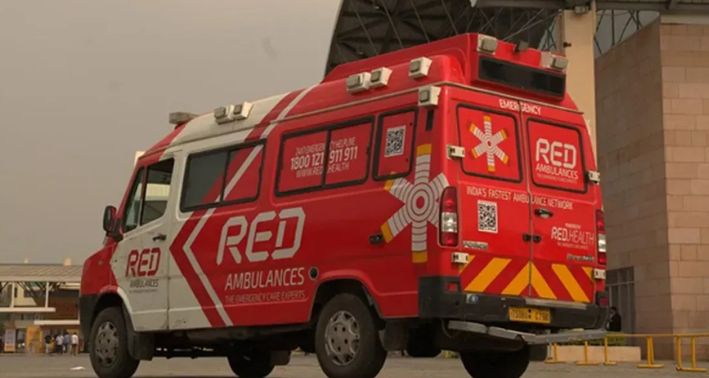In the evolving healthcare landscape of India, timely medical response can be the defining factor in saving lives. Traditionally, calling a local ambulance service number was the only lifeline during a health emergency. But today, digital innovations have expanded the reach and speed of ambulance services through online booking platforms. Alongside emergency transport, patient transport ambulances have emerged as essential tools for non-urgent yet critical medical journeys. Together, these developments are reshaping how patients experience care—from the moment help is called to the point they receive it.
The Importance of the Ambulance Service Number
In an emergency, seconds matter. While technology offers new conveniences, the traditional ambulance service number remains a critical component of the emergency response system. Numbers like 108 (used widely across Indian states) directly connect citizens to emergency medical services (EMS), dispatching government or private ambulances within minutes.
Yet, awareness remains a hurdle. Many people are unaware of their regional EMS number or assume there is a one-size-fits-all emergency number across the country. Education campaigns and public signage at schools, hospitals, and community centers can help bridge this knowledge gap, ensuring people know where to turn when urgent medical assistance is needed.
Online Ambulance Services: A Digital Shift in Emergency Response
The arrival of online ambulance booking platforms has marked a significant shift in how emergency medical services are accessed. These platforms allow users to request an ambulance using a smartphone, desktop, or app—eliminating the confusion of calling multiple numbers and waiting for availability confirmation.
Key benefits of online ambulance services include:
-
Real-time GPS tracking of ambulances
-
Option to select ambulance types (BLS, ALS, ICU-equipped)
-
Transparent pricing and payment options
-
24/7 availability and multi-lingual support
Services like RED.health have set the standard by offering centralized ambulance dispatching in both metro cities and semi-urban areas. With a few clicks, families can arrange for life-saving transport without logistical hassles or long call wait times.
Patient Transport Ambulance: Essential for Planned Medical Travel
While emergency ambulances are vital during crises, patient transport ambulances serve a quieter but equally important purpose. These vehicles support planned medical journeys for patients who require supervised transport but are not in critical condition.
Common use cases include:
-
Transferring patients between hospitals for specialized treatment
-
Transporting elderly or immobile patients for routine checkups
-
Facilitating post-operative follow-ups
-
Enabling cancer patients to reach chemotherapy centers safely
Unlike emergency ambulances, patient transport vehicles are usually staffed with trained personnel who assist with lifting, mobility, and comfort throughout the journey. Thanks to online platforms, families can now pre-schedule patient transport services with flexible timing and vehicle preferences.
How Integration with Hospitals Improves Care
One of the greatest strengths of modern ambulance networks is their integration with healthcare institutions. Online ambulance providers often coordinate directly with hospitals, clinics, and diagnostic centers to ensure seamless care upon arrival.
This integration provides:
-
Advance communication between ambulance teams and hospitals
-
Bed availability checks before patient arrival
-
Time-saving hospital readiness for emergency cases
-
Reduced treatment delays
Such coordination means that medical teams are informed and prepared when a patient arrives, especially in cases involving trauma, cardiac events, or critical care transfer.
Challenges to Address
Despite the progress made, several challenges remain in optimizing ambulance services across India:
-
Rural areas continue to face delays due to lack of vehicle availability or poor road access.
-
There’s limited standardization of private ambulance operators.
-
Not all ambulance drivers or attendants receive the same level of training.
Solving these issues requires a multi-stakeholder effort involving government support, private sector accountability, and community participation. Training programs, licensing regulation, and increased investment in digital infrastructure can ensure ambulance services reach even the most remote corners of the country.
Conclusion
India’s emergency response system is undergoing a major transformation—thanks in large part to digital platforms offering online ambulance services and reliable patient transport solutions. While the ambulance service number remains a foundational emergency tool, online booking options give patients and families greater speed, choice, and control. With improved integration, better regulation, and a focus on both emergency and non-emergency transport needs, the nation is building a healthcare response system that’s faster, smarter, and more inclusive.
By embracing both traditional and digital tools, India moves one step closer to a future where help isn’t just on the way—it’s already on the map.
- From Call to Care: Online Ambulance & Patient Transport Services in India
- Explore how online ambulance booking and patient transport services are improving medical response times in India. Learn about emergency numbers, digital access, and non-emergency medical transport options.
- ambulance service number, online ambulance service, patient transport ambulance, emergency medical services, ambulance booking India, non-emergency ambulance, RED.health, medical transport, 24/7 ambulance, healthcare logistics
Related posts:
 How to Lose Weight Fast Naturally and Permanently ?
How to Lose Weight Fast Naturally and Permanently ?
 How Laparoscopic Simulators Improve Precision & Reduce Surgical Errors
How Laparoscopic Simulators Improve Precision & Reduce Surgical Errors
 Personalized Healing at Your Doorstep: Home Nursing Services in Faridabad
Personalized Healing at Your Doorstep: Home Nursing Services in Faridabad
 Exploring the Best Non – Surgical Treatments for Fibroids in Gurgaon
Exploring the Best Non – Surgical Treatments for Fibroids in Gurgaon
 How Much Does Mole Removal Cost in Islamabad?Mole Removal Islamabad
How Much Does Mole Removal Cost in Islamabad?Mole Removal Islamabad
 Eight Key Things You Need to Know About Ultherapy Prime Today
Eight Key Things You Need to Know About Ultherapy Prime Today
 What You Should Know About Taking 125mcg Vitamin D3 Daily includes its potential to support immune function
What You Should Know About Taking 125mcg Vitamin D3 Daily includes its potential to support immune function
 Comprehensive Guide to IVF Treatment in Delhi at Sunrise Hospital
Comprehensive Guide to IVF Treatment in Delhi at Sunrise Hospital





